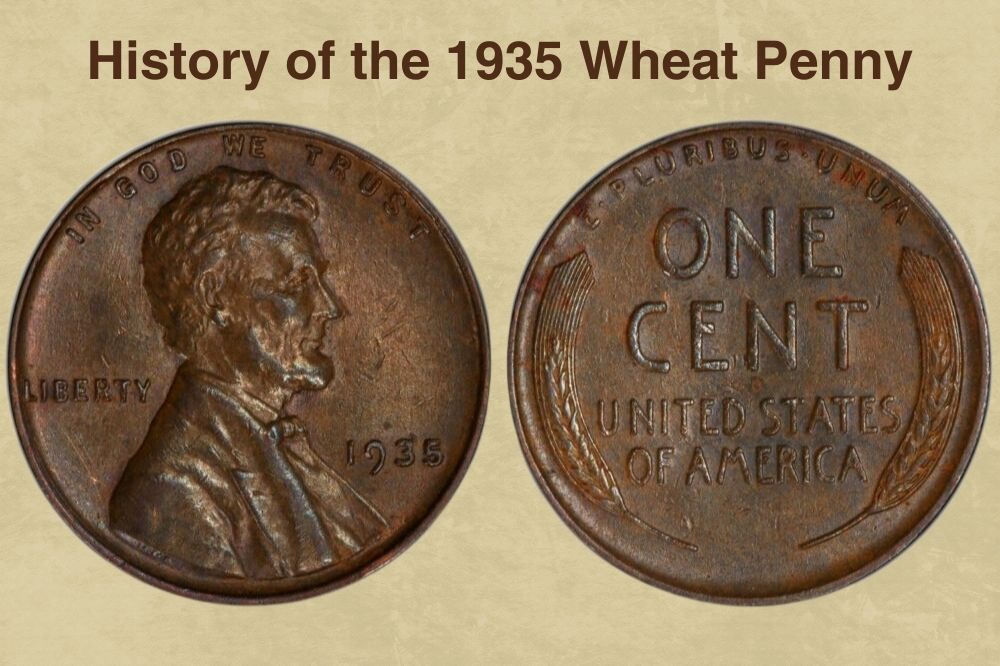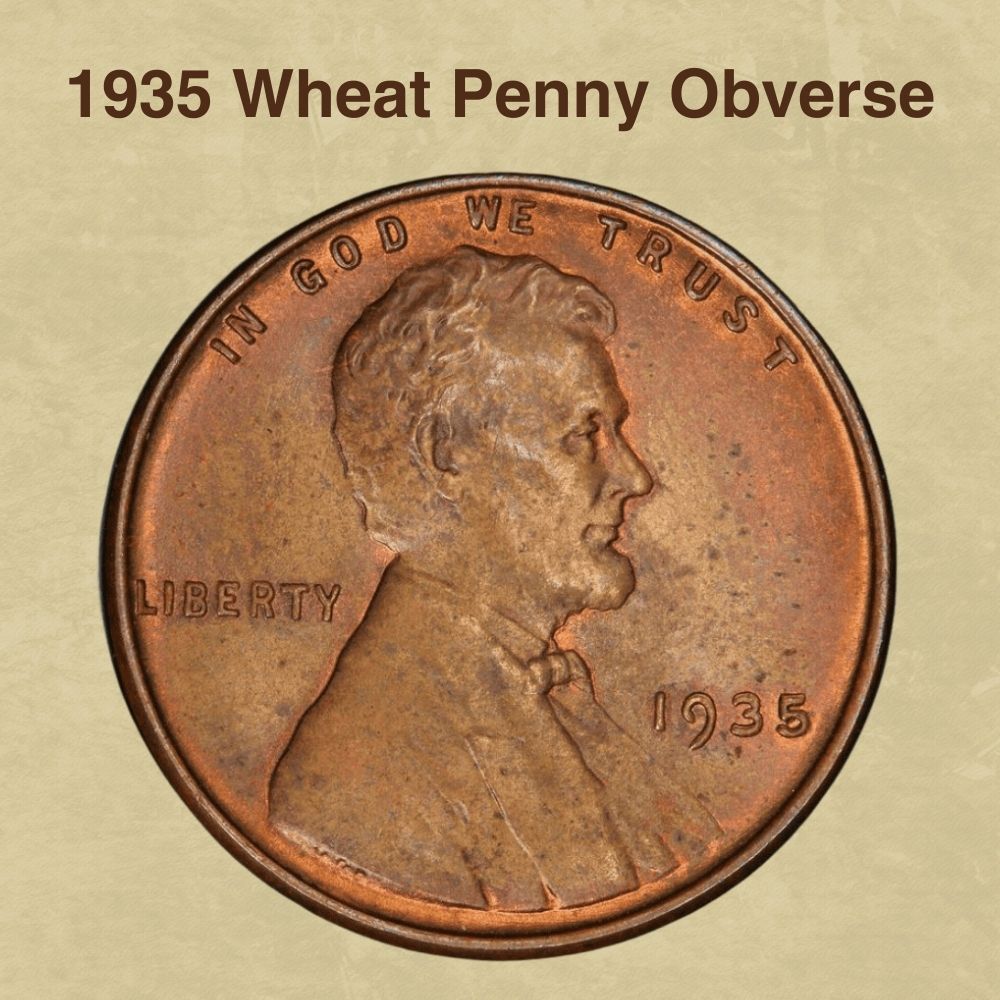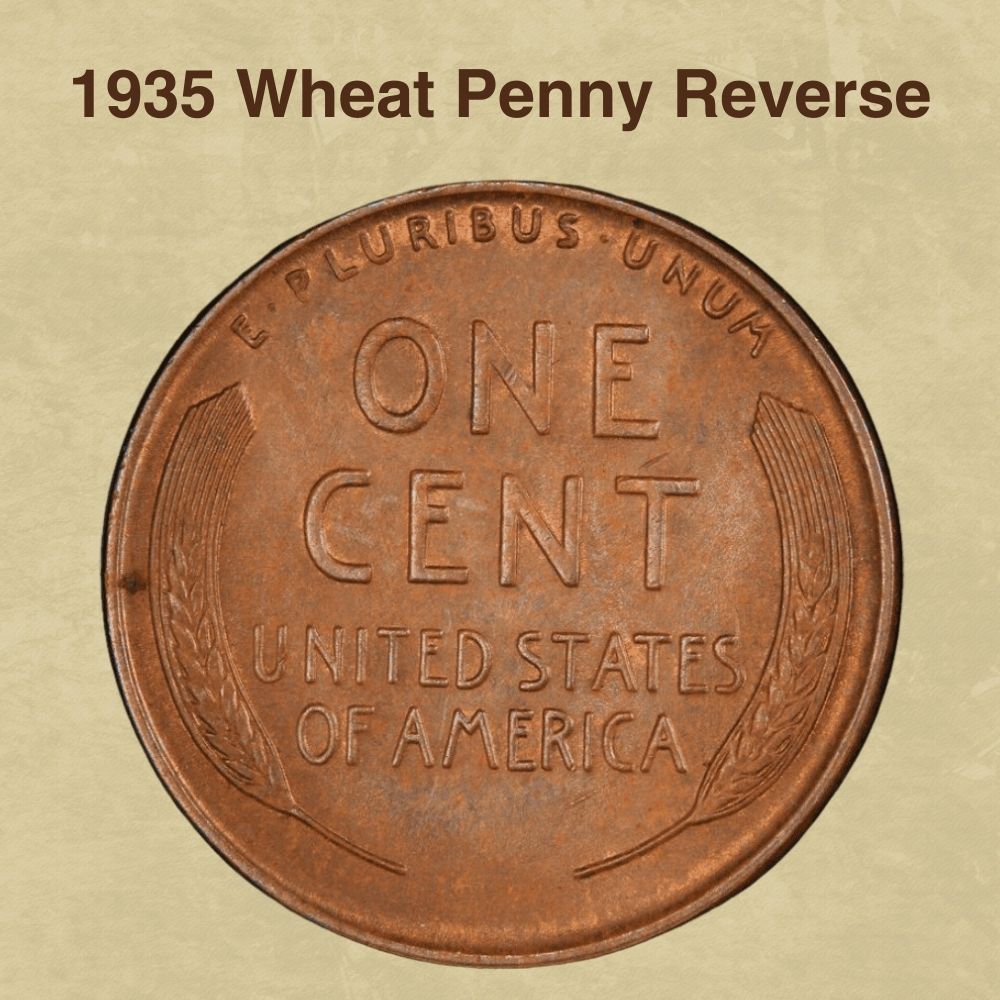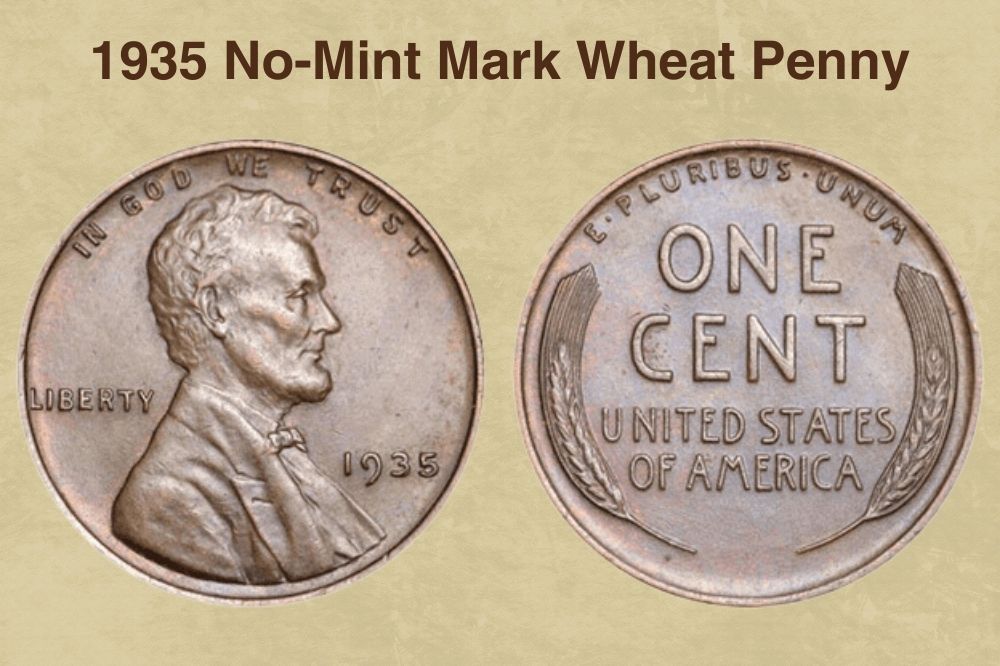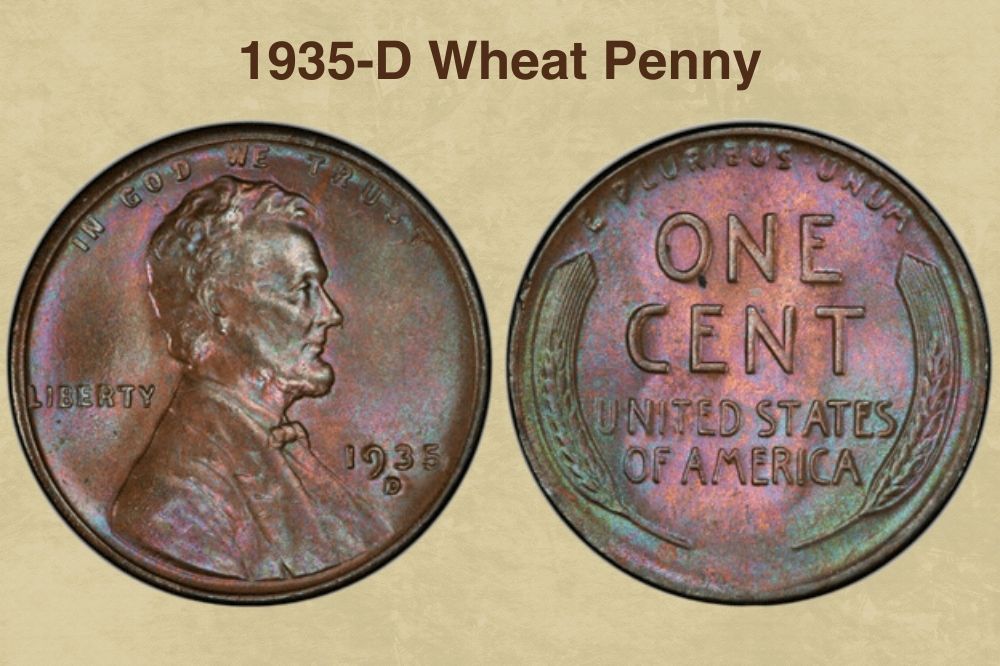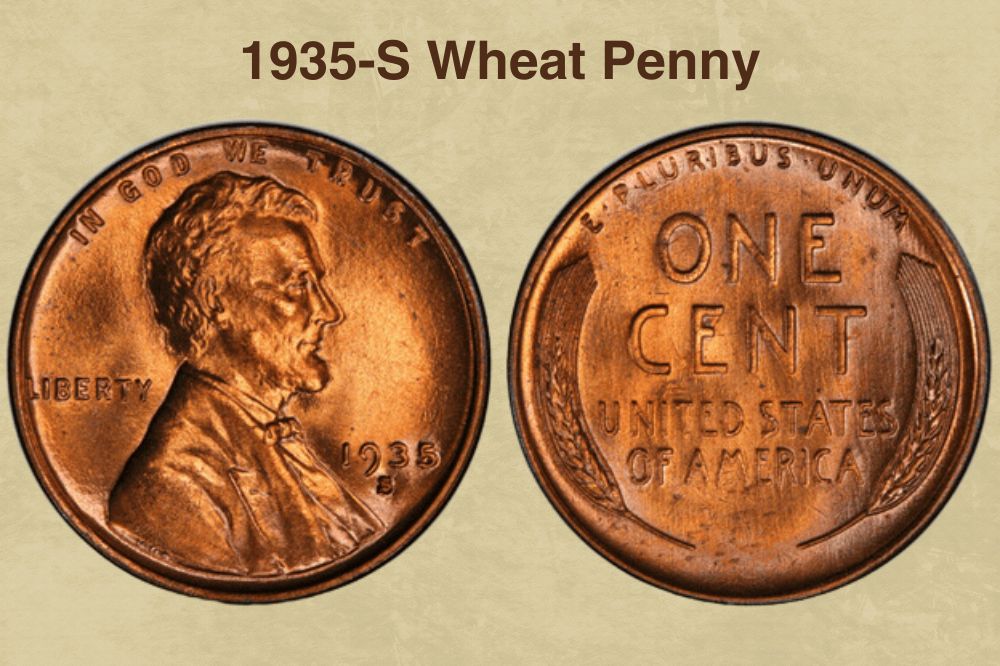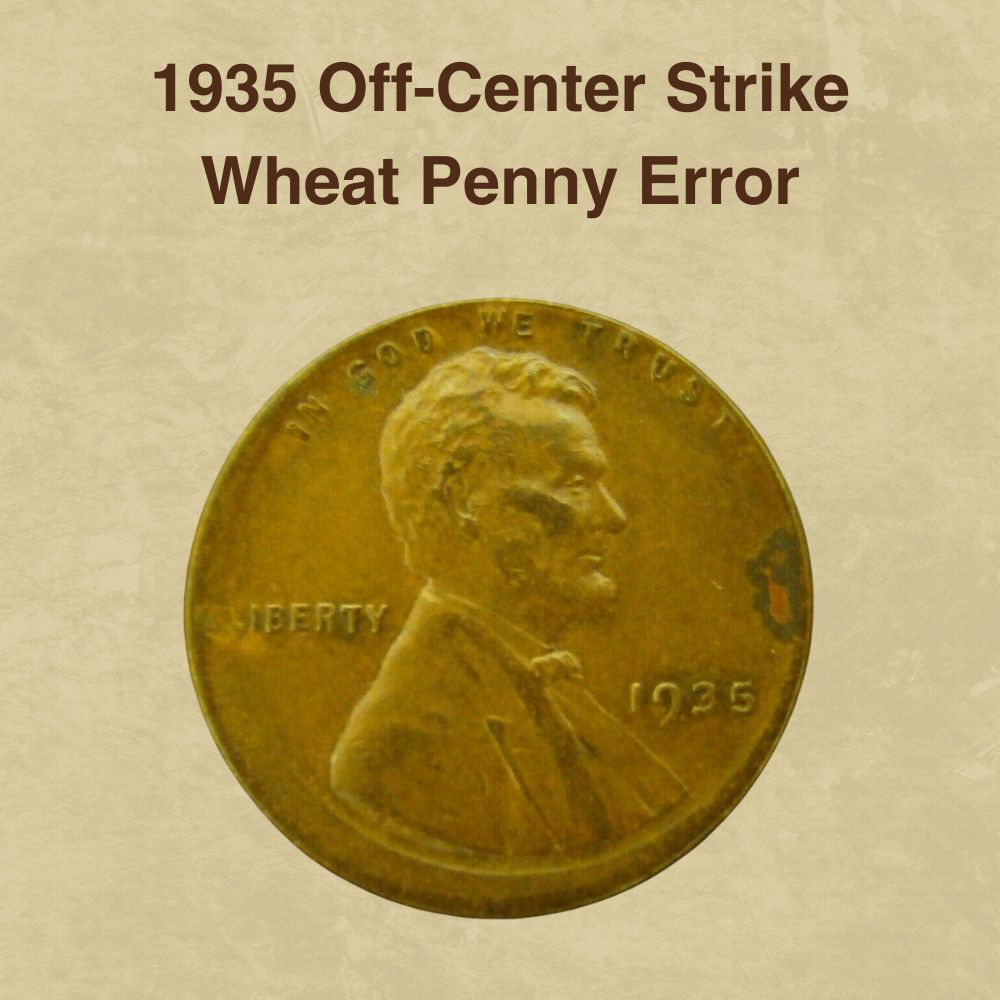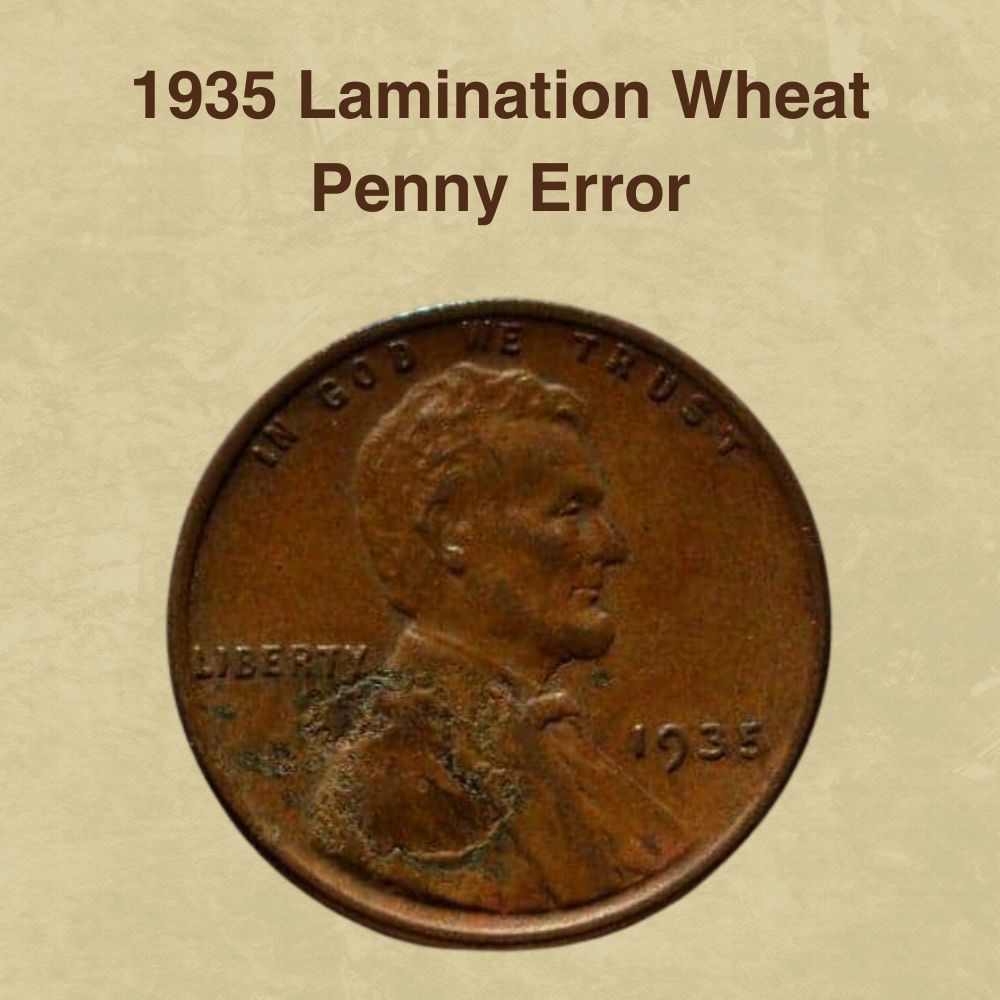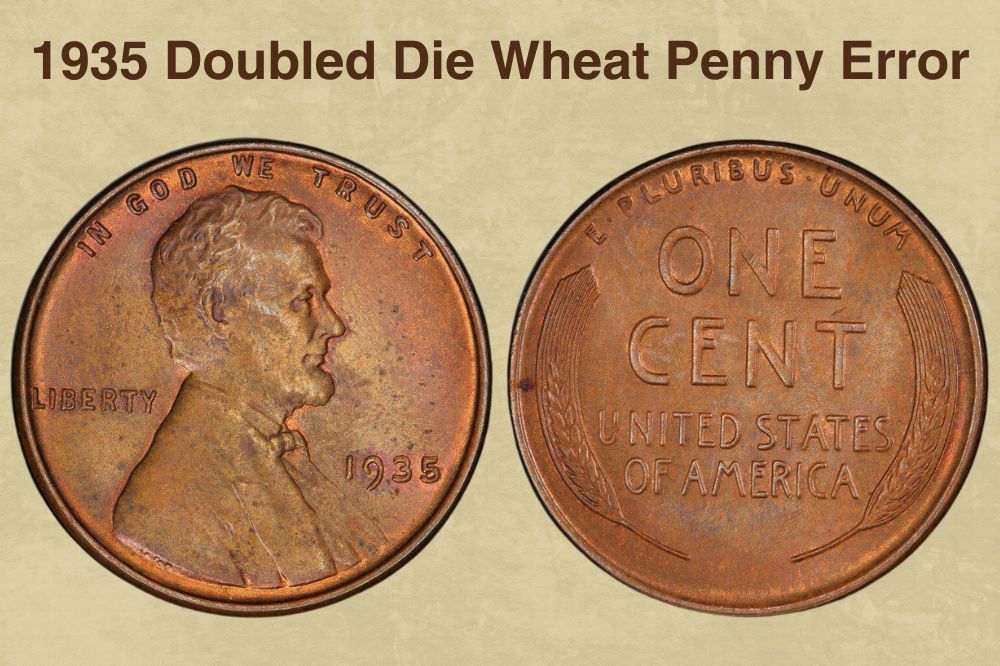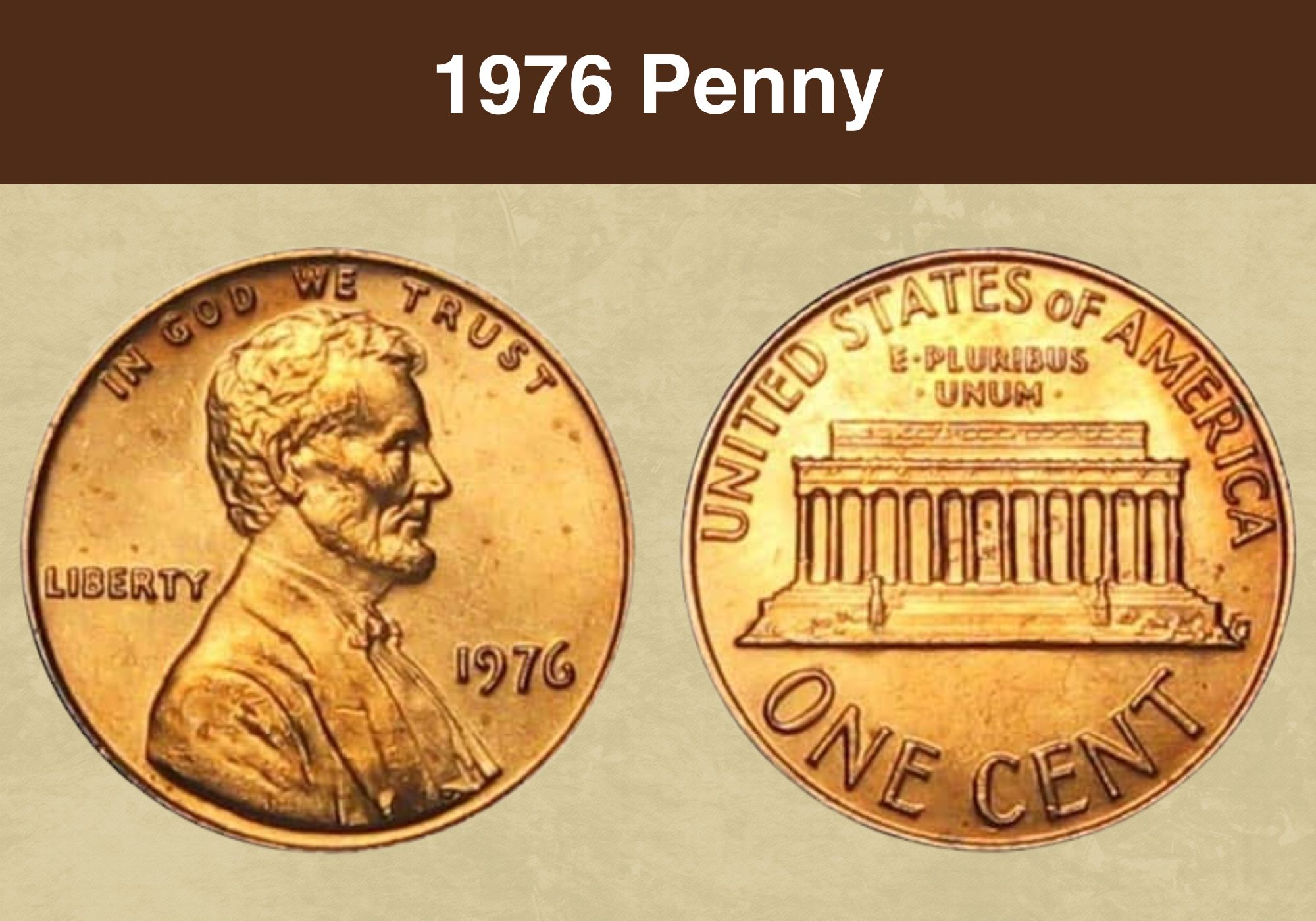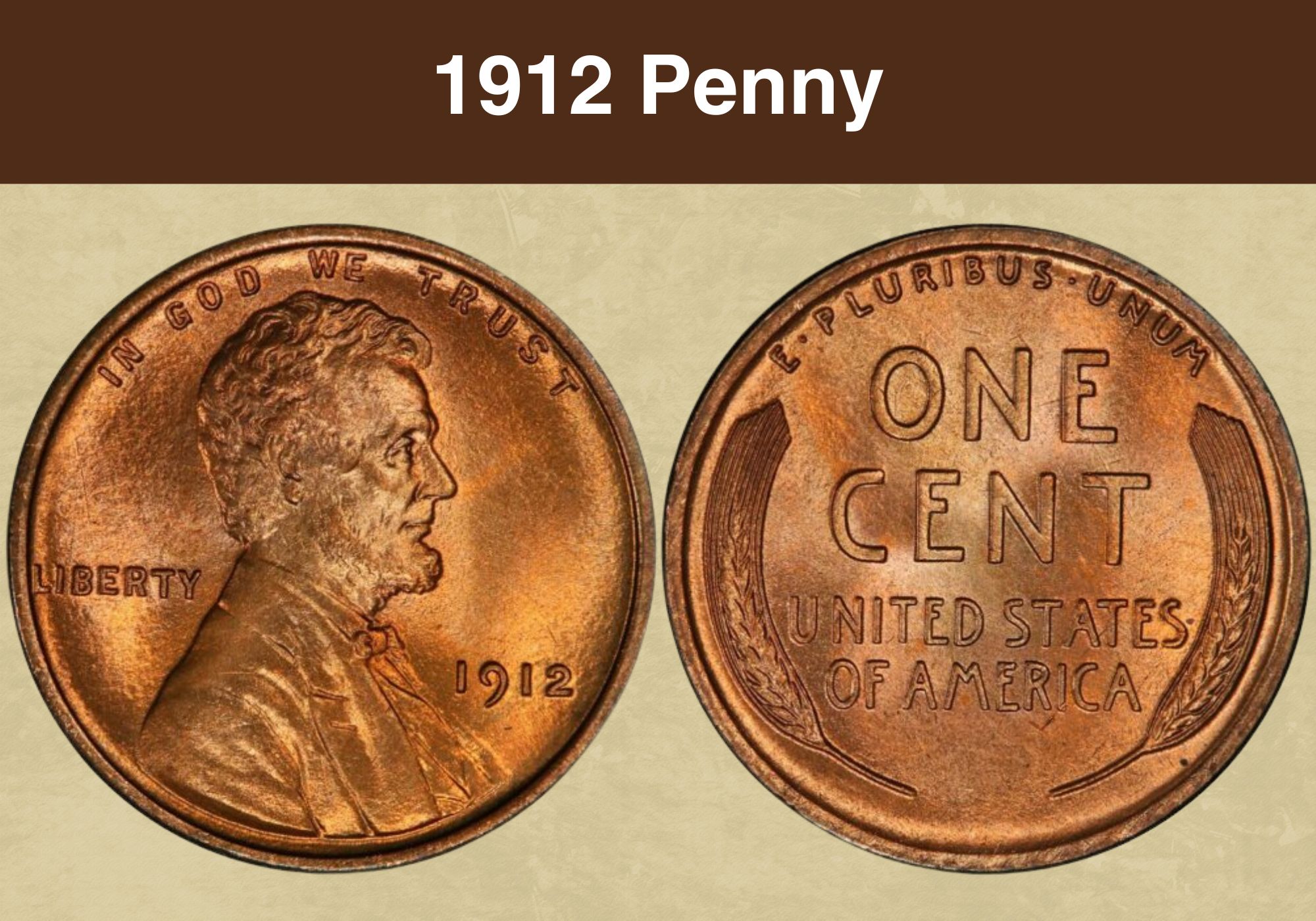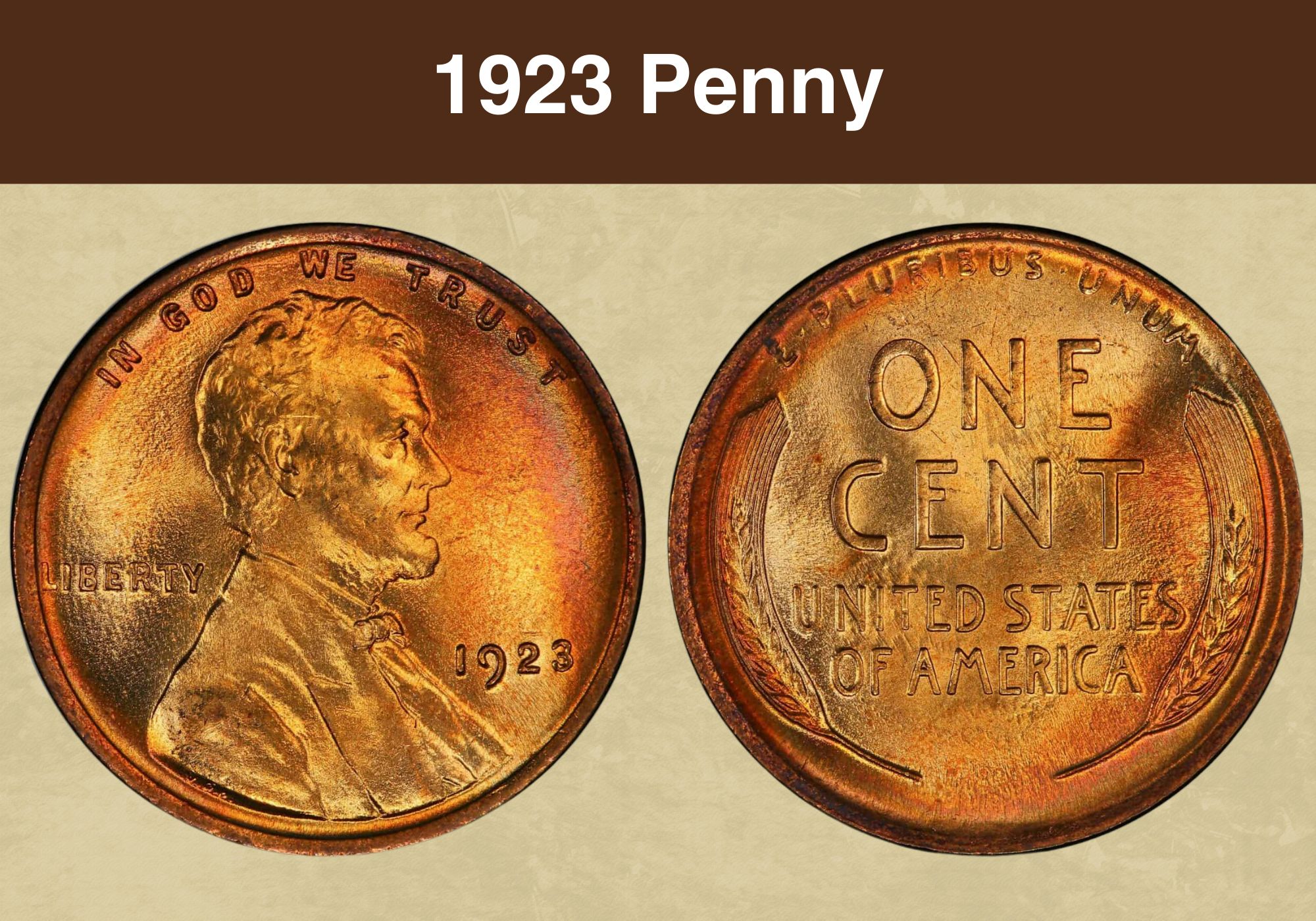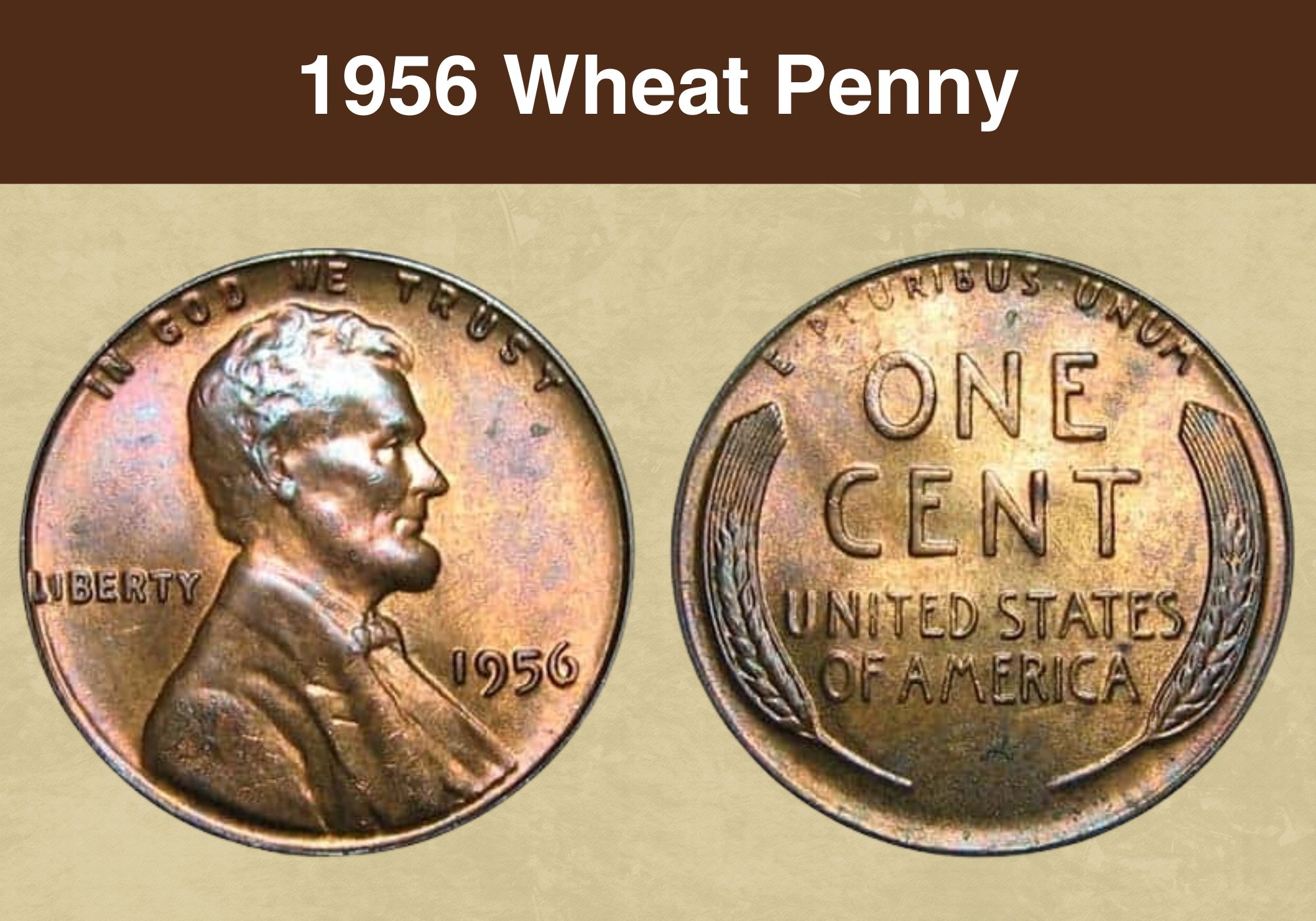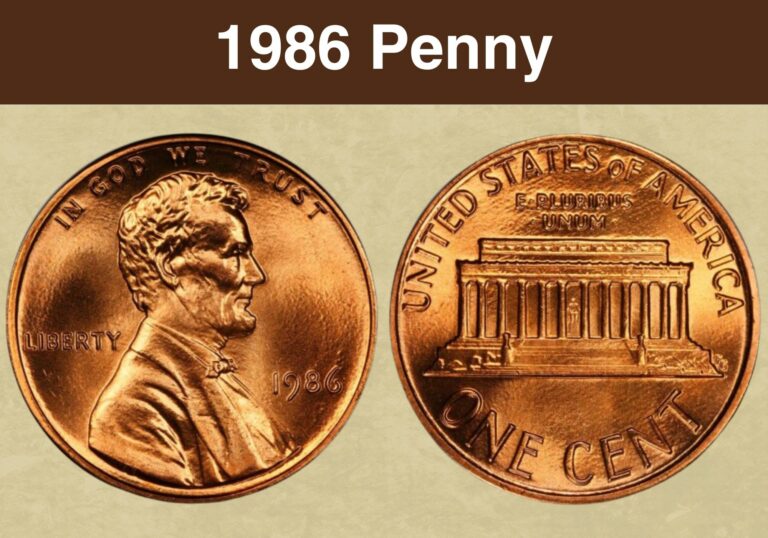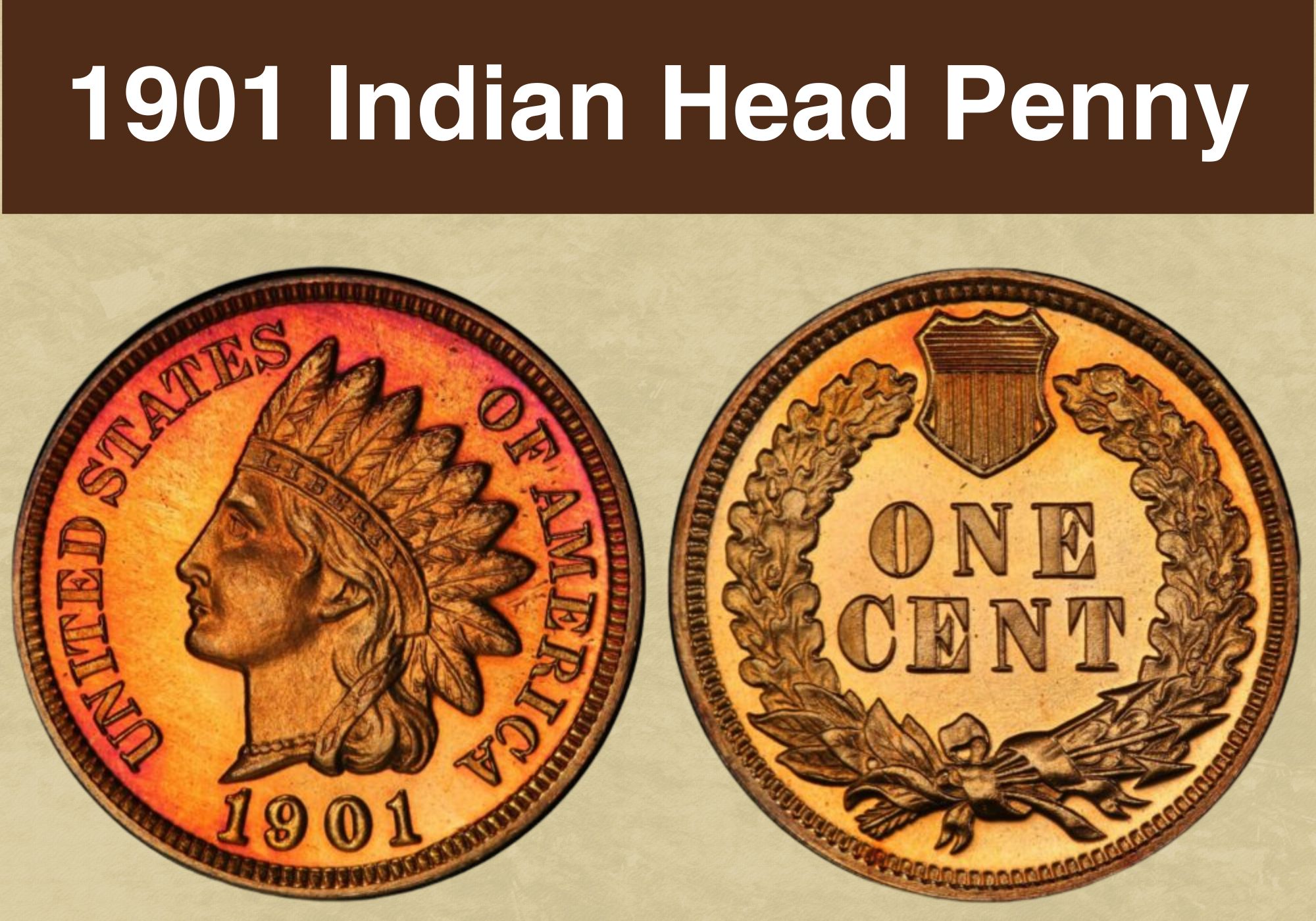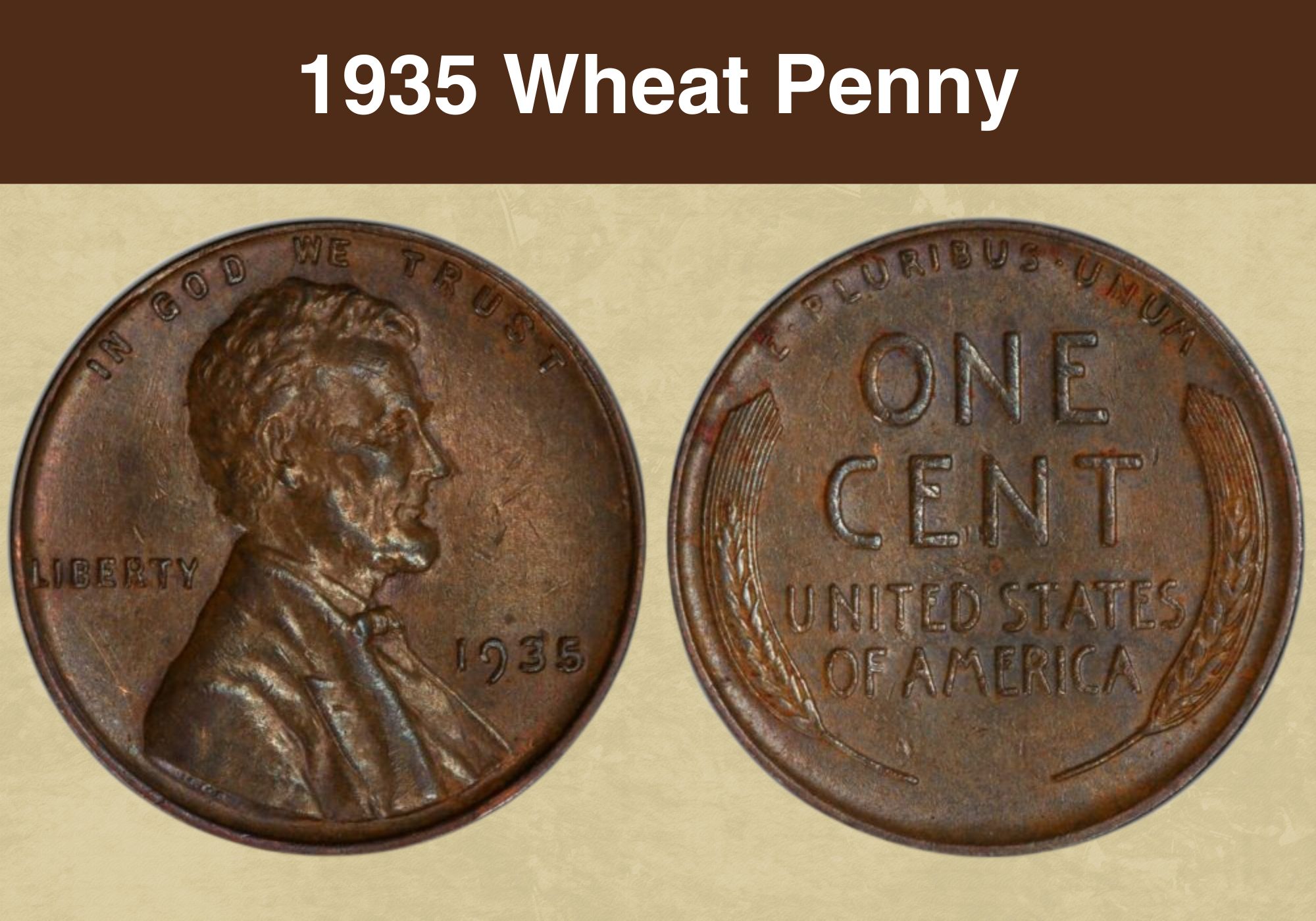
Coin Value Contents Table
- 1935 Wheat Penny Value Chart
- The History of the 1935 Wheat Penny
- Features of the 1935 Wheat Penny
- 1935 Wheat Penny Grading
- 1935 Wheat Penny Value Guides
- 1935 No-Mint Mark Wheat Penny Value
- 1935-D Wheat Penny Value
- 1935-S Wheat Penny Value
- Rare 1935 Wheat Penny Errors List
- Where to Sell Your 1935 wheat penny ?
- FAQS
Do you own a wheat penny from 1935? Are you curious whether you can make a fortune from this old coin?
Or, are you a collector considering adding a 1935 wheat penny to your collection?
You’ve come to the right place!
We wrote this article to explain everything you need to know about the 1935 wheat penny value.
Lincoln Wheaties are quite collectible given that Abraham Lincoln was a popular president who left an indelible mark on our country ‘s history.
However, these coins are worn and below average, because they are quite old. They are, therefore, worth more or less their face value.
That said, if you are lucky enough to come across an uncirculated 1935 penny in mint state, it might be more valuable than the regular Lincoln wheat penny.
Let’s figure out: How much is a 1935 wheat penny? You will also discover the coin’s history, unique features, tips for grading your Wheaties, and errors that might be worth good money.
Let’s get started!
1935 Wheat Penny Value Chart |
||||
| Mint Mark | Good | Fine | Extremely Fine | Uncirculated |
| 1935 No-Mint Mark Wheat Penny | $0.10 | $0.20 | $0.50 | $50 |
| 1935-D Wheat Penny | $0.15 | $0.25 | $0.75 | $25 |
| 1935-S Wheat Penny | $0.15 | $0.35 | $2 | $150 |
The History of the 1935 Wheat Penny
The wheat penny, also known as the Lincoln cent, was first struck in 1909 and lasted until 1958, after which the reverse design was changed.
Wheat pennies get their name from the reverse design, which features two wheat ears, symbolic of abundance in our country.
Although the sculptor Victor David Brenner designed the obverse and reverse of the Lincoln cent, the United States Mint had initially commissioned another sculptor, August Saint-Gaudens, to redesign some of the country’s coins, including four gold coins and the cent.
However, Saint-Guadens passed away in 1907 before submitting designs for the cent, although he submitted those for the gold coins.
A few years earlier, President Theodore Roosevelt had urged Mint officials to redesign U.S. coins, providing them with a higher relief and more expansive surface to fully accommodate all the design elements on the obverse and reverse.
In line with the president’s request, the Mint commissioned Saint-Gaudens in 1905 to redesign the targeted coins. But, since he passed away before submitting designs for the coin, the Mint hired a new sculptor to finish the job.
Victor David Brenner designed the new wheat penny featuring President Abraham Lincoln to commemorate his centennial birth anniversary. The reverse featured two wheat ears, thus the name, ‘’wheat penny.’’
The new Lincoln cent comprised 95% copper and 5% zinc. However, this composition changed permanently to 97% zinc and about 2% copper in 1982, more than 70 years after the first Wheaties were struck.
Also read: 12 Most Valuable Lincoln Penny Worth Money
Features of the 1935 Wheat Penny
We’ll now look at the features of the 1936 wheat penny. Whether you are a new collector or a veteran, knowing your coin’s attributes will help you know what to look for when grading your 1935 wheat pennies.
The Obverse of the 1935 Wheat Penny
The obverse of the 1935 wheat penny features Abraham Lincoln’s right-facing portrait picture in which we see him adorned in a suit and a bow tie.
The words IN GOD WE TRUST appear at the top above the president’s head, making a bold statement.
You will also see the word LIBERTY on the left side and the year date, 1935, on the right.
Reverse of the 1935 Wheat Penny
The reverse of the 1935 Lincoln wheat penny is as simple as the obverse. Here, two wheat ears appear on either side of the penny, giving this coin its distinctive name.
The motto, E PLURIBUS UNUM, is shown at the top of the coin around the inner rim.
At the coin’s center, nestled between the two wheat stalks, you will see the coin’s denomination, ONE CENT, underscored by the country’s name, UNITED STATES OF AMERICA.
Other Features of the 1935 Wheat Penny
The 1935 wheat penny measures 19.00 millimeters in diameter and is 3.11 grams heavy. It is made of 95% Copper and 5% Tin and Zinc and comes with a plain edge.
These coins were minted in Philadelphia, Denver, and San Francisco. The Denver and San Francisco wheat pennies bear mint marks D and S on the obverse below the year date. Those minted in Philly do not have a mint mark on the obverse or reverse.
Also read: 13 Most Valuable Wheat Penny Worth Money
1935 Wheat Penny Grading
When collecting wheat pennies, including those dated 1935, focus on uncirculated, more valuable examples.
Uncirculated wheat pennies should demonstrate even and continual luster from one end of the coin to the other.
Pay attention to high points such as Lincoln’s jaw and check to exclude any signs of wear. Check that there is no smoothness on his beard and the coat’s front edge.
On the reverse, check for frosting, especially on the inscription ONE CENT, and for luster across the field. The wheat grains should retain their texture with no signs of smoothness.
| # | Grade |
|---|---|
| 1 | Basal State-1 |
| 2 | Fair |
| 3 | Very Fair |
| 4, 5, 6 | Good |
| 7, 8, 10 | Very Good |
| 12, 15 | Fine |
| 20, 30 | Very Fine |
| 40 | Extremely Fine |
| 50 | About Uncirculated |
| 60 | Mint State |
| 65 | Mint State |
| 70 | Mint State |
Please check our grading guides to know your coin scale, It’s the necessary step to know the exact value of your coin.
Check out now: How to Grade Lincoln Wheat Penny?
1935 Wheat Penny Value Guides
So, how much is a 1935 wheat penny worth?
Most 1935 wheat pennies are worth more or less their face value. Brown and brown-red examples are less valuable than their red counterparts, which are subsequently more desirable to collectors.
There are three varieties of the 1935 wheat penny. These are:
- 1935 No-Mint Mark Wheat Penny
- 1935-D Wheat Penny
- 1935-S Wheat Penny
Let’s look at the value of each.
1935 No-Mint Mark Wheat Penny Value
The mint in Philadelphia produced about 245,388,000 in 1935. The high mintage means these Wheaties are widely available despite being very old.
Because the Mint released most of these coins into circulation, the examples you will find will generally be well-worn and, therefore, not worth more than their face value.
A brown 1935 no-mint mark wheat penny will fetch between $0.05 and $1.50 in circulated condition. Uncirculated examples are equally affordable, allowing you to acquire an MS65 for just $15 and an MS67 for as much as $50.
Fully red specimens are more valuable, with examples graded MS65 fetching up to $36. Those graded MS68 are extremely rare and will command premium prices of as much as $8,500.
In 2022, Legend Rare Coins Auctions sold a 1935 no-mint mark wheat penny for a whopping $55,813, making this the most expensive wheat penny in the 1935 series.
1935-D Wheat Penny Value
The Denver facility registered the second-highest mintage, producing 47,000,000 wheat pennies in 1935.
Many of the 1935-D wheat pennies are not well-struck due to the mint using old working dies to produce these coins. This and the high mintage significantly lower the coin’s value.
Brown circulated 1935-D wheat pennies are worth between $0.10 and $2.75. Like their Philly counterparts, uncirculated examples are affordable, so you can acquire an MS65 for only $11, while an MS67 is worth about $25.
A full red specimen will fetch significantly more. You can expect about $50 for an MS65, but this price can skyrocket to as much as $12,500 for a specimen that is graded MS68.
According to the Professional Coin Grading Service (PCGS), the most expensive 1935-D wheat penny is graded MS67(Red) and was sold for $8,080 at a Stack’s Bower auction in 2018.
1935-S Wheat Penny Value
San Francisco had the lowest mintage in 1935, producing 38,702,000 wheat pennies. While this is a comparatively low mintage compared to Philly and Denver, these are still a lot of pennies!
The 1935-S wheat pennies are common and affordable in all grades. Most examples will reveal a weak strike resulting from worn dies, so it’s best to find coins with a superior strike in this series.
Circulated examples fetch between $0.10 and $6.50, slightly more than their no-mint mark and Denver counterparts. Specimens graded mint state are equally affordable; with just $150, you can acquire a nice-looking MS67.
As expected, full red specimens are worth much more, mostly because they are extremely rare in this series. Expect to part with at least $6,100 for a 1935-S wheat penny graded MS67.
Also read: 17 Most Valuable Indian Head Penny Worth Money
Rare 1935 Wheat Penny Errors List
Here are some 1935 wheat penny errors worth money.
1935 Wheat Penny on A Dime Planchet Error
A coin is rarely minted on a smaller or larger planchet than the intended one, so when such an error comes up, it is bound to be super popular among collectors.
In 1935, mint workers struck the design of a 1935 wheat penny on a dime that had probably been left over in the minting hub. Because the dime planchet is small, the penny’s design elements don’t properly fit on the planchet, resulting in an odd-looking penny on a dime.
So popular is the 1935 wheat penny on a dime planchet error that collectors are willing to pay up to $500 for it. This price can increase depending on whether the coin’s condition is above average or in mint state.
1935 Struck Through Wheat Penny Error
Struck-through errors occur when a small object is caught between the planchet and the working die, leaving an impression on the planchet.
Sometimes, when grease comes between the planchet and the striking die, it can obscure the transfer of the design elements to the planchet. So you get a partial design on the obverse or reverse of the coin depending on where the grease is.
The 1935 wheat penny series has a few struck-through grease errors, and due to the dramatic effect of missing design elements, this error is quite fascinating to collectors.
If you own a struck-through wheat penny from 1935, you can expect about $150 for the coin.
1935 Off-Center Strike Wheat Penny Error
Off-center strikes are also popular among collectors, with some willing to pay hundreds of dollars for coins with this error.
An off-center strike happens when the striking die or planchet is misaligned, causing the design elements to be struck away from the center.
This can lead to a percentage of the design missing. Off-strikes in which 50% of the design is missing are more valuable than those in which only 5% or 10% are missing.
You can expect as much as $50 for a 11935 off-center strike wheat penny error in which at least 50% of the design is missing.
1935 Lamination Wheat Penny Error
Lamination errors occur when the coin’s surface cracks and begins to flake. This happens when the alloy’s contaminants cause a metal separation along the coin’s horizontal plane.
You can identify a laminated penny by the way the patina seems to peel off. A 1935 lamination wheat penny error can fetch as much as $50.
1935 Doubled Die Wheat Penny Error
The doubled die is the most common minting error caused by duplicating the design elements on the working die.
This error can occur when the die or hub is misaligned, leading to a slight or strong doubling of the images and inscriptions on the coin.
In the 1935 wheat pennies, doubling is noticeable on the obverse and reverse of some coins. You may notice doubling around Lincoln’s beard, date, and the motto IN GOD WE TRUST.
On the reverse, doubling may be seen around the inscriptions E PLURIBUS UNUM and UNITED STATES OF AMERICA.
It is also common for doubling to occur around the mint mark, resulting in a re-punched or fill-in mint mark error.
A 1936 doubled die wheat penny error can bring as much as $80, but this value can increase depending on the coin’s value.
Also read: 11 Most Valuable Wheat Penny Errors
Where to Sell Your 1935 wheat penny ?
Now that you know the value of your coins, do you know where to sell those coins online easily? Don’t worry, I’ve compiled a list of these sites, including their introduction, pros, and cons.
Check out now: Best Places To Sell Coins Online (Pros & Cons)
FAQS
What makes a 1935 wheat penny valuable?
A 1935 wheat penny in circulated condition is generally worth its face value. However, it might be very valuable if you find an uncirculated, full red gem. Such unscathed specimens are not impossible to find, but they are extremely rare and will likely fetch a lot. So, full luster and a red patina can make a 1935 wheat penny valuable.
Are 1935 pennies rare?
No. 1935 wheat pennies are abundant on the rarity scale. The mints at Philadelphia, Denver, and Francisco produced more than 300 million wheat pennies in 1935. These coins are not rare and can still be found in circulation. That said, specimens graded MS68 can be extremely hard to find, making these examples quite valuable.
What were pennies made of in 1935?
Wheat pennies were largely made of copper (95%) and a combination of tin and zinc (5%). Contrary to some collectors’ opinions, smelting copper coins for their bullion value is not as profitable given the relatively low and unstable price of copper metal.

